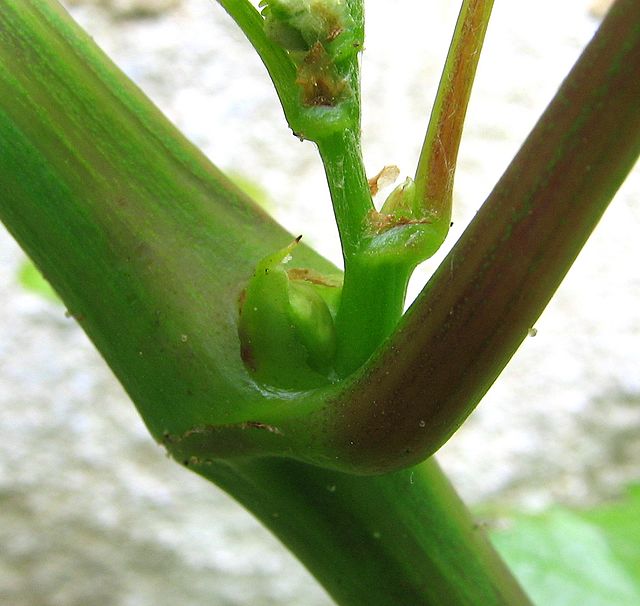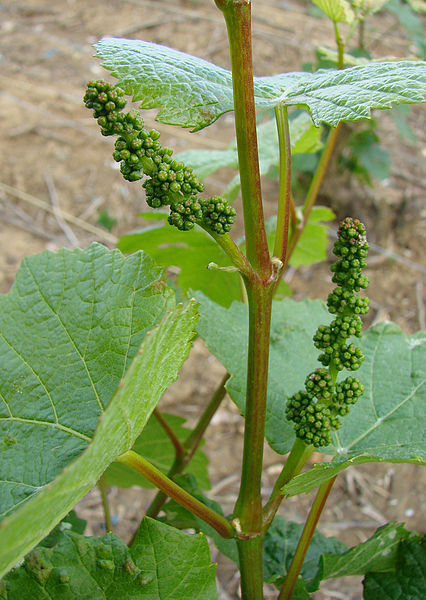Coulure is a viticultural hazard that is the result of metabolic reactions to weather conditions that causes a failure of grapes to develop after flowering. In English the word shatter is sometimes used. Coulure is triggered by periods of cold, cloudy, rainy weather or very high out-of-season temperatures. The condition is most often manifested in the spring. It also occurs in vines that have little sugar content in their tissue. Flowers stay closed and are not fertilized. Thus the vines are not pollinated as the grape fails to develop and falls off. Coulure can also cause irregular bunches of grapes which are less compact than normal. These bunches are more sensitive to developing various grape diseases. The yield of a vine with coulure will decrease substantially. Grape varieties with high proclivity to coulure are Grenache, Malbec, Merlot, and Muscat Ottonel. Other causes of coulure may be vineyard conditions and practices, pruning too early or too severely, excessively fertile soils or overuse of fertilizers, and improper selection of rootstocks or clones.

Young grapes are most susceptible to coulure right after flowering when they need vital carbohydrate resources in order to develop fully.
Grapevines need a balance of sufficient leaf cover in order to produce photosynthesis but not shade the grapes too much from sunlight.
Most likely a clear example of coulure.
Malbec can be highly susceptible to coulure but newer clones are being produced with less sensitivity.
Annual growth cycle of grapevines
The annual growth cycle of grapevines is the process that takes place in the vineyard each year, beginning with bud break in the spring and culminating in leaf fall in autumn followed by winter dormancy. From a winemaking perspective, each step in the process plays a vital role in the development of grapes with ideal characteristics for making wine. Viticulturalists and vineyard managers monitor the effect of climate, vine disease and pests in facilitating or impeding the vine's progression from bud break, flowering, fruit set, veraison, harvesting, leaf fall and dormancy – reacting if need be with the use of viticultural practices like canopy management, irrigation, vine training and the use of agrochemicals. The stages of the annual growth cycle usually become observable within the first year of a vine's life. The amount of time spent at each stage of the growth cycle depends on a number of factors – most notably the type of climate and the characteristics of the grape variety.

Grape vine and fruit
The bud of a Regent vine located between the stem and petiole.
Developing inflorescences
The calyptra is shed and pollen is transferred from the anthers to the stigma fertilizing the flower.








